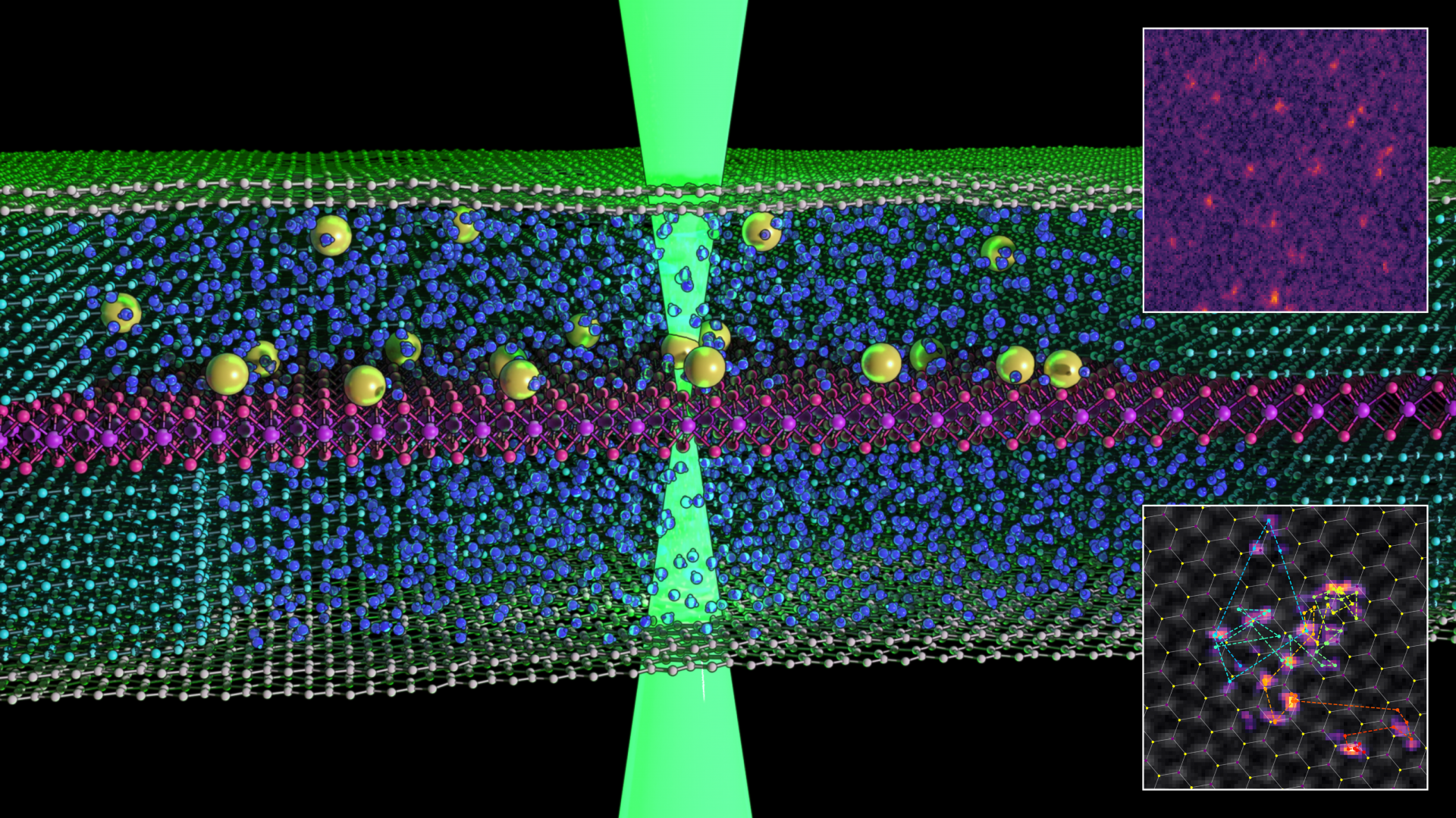University of Manchester graphene researchers have developed a novel “nano-petri dish” employing two-dimensional (2D) materials to develop a new technique for watching how atoms move in liquid.
 Atoms swimming in liquid thanks to graphene. Image Credit: The University of Manchester
Atoms swimming in liquid thanks to graphene. Image Credit: The University of Manchester
The team, led by scientists from the National Graphene Institute (NGI), used stacks of 2D materials, such as graphene, to trap liquid to truly comprehend how the existence of liquid alters the behavior of the solid. Their findings were published in the journal Nano Letters.
For the first time, the team was able to photograph a single atom “swimming” in a liquid. The results could have a significant effect on how green technologies like hydrogen production are developed in the coming years.
When a liquid and a solid are in close proximity to one another, both substances adapt to the other’s presence. These atomic-scale interactions at solid–liquid interfaces control the behavior of fuel cells and batteries used to generate clean power, as well as the effectiveness of systems used to produce clean water and many biological activities.
Given the widespread industrial and scientific importance of such behavior it is truly surprising how much we still have to learn about the fundamentals of how atoms behave on surfaces in contact with liquids. One of the reasons information is missing is the absence of techniques able to yield experimental data for solid-liquid interfaces.
Sarah Haigh, Lead Researcher and Professor, National Graphene Institute
One of the few methods that enable the observation and analysis of individual atoms is transmission electron microscopy (TEM). The structure of materials adjustments in a vacuum, and the TEM apparatus needs a high vacuum setting.
In our work we show that misleading information is provided if the atomic behavior is studied in vacuum instead of using our liquid cells.
Dr. Nick Clark, Study First Author, National Graphene Institute
Professor Roman Gorbachev of the NGI developed the stacking of 2D materials for electronics; thus, his team has developed a “double graphene liquid cell” using the same methods.
Graphene windows encased a 2D layer of molybdenum disulfide that was completely suspended in the liquid. They were able to create perfectly regulated liquid layers thanks to their innovative design, which allowed them to record the first-ever movies of individual atoms “swimming” in liquid.
The scientists were able to comprehend how the liquid affected atomic behavior by studying the movements of the atoms in the videos and comparing their findings to theoretical explanations offered by Cambridge University colleagues. It was discovered that the liquid both accelerated the atoms’ mobility and altered their preferred resting places in relation to the underlying solid.
The researchers investigated a material that holds promise for producing green hydrogen, but the experimental system they created has a wide range of potential uses.
This is a milestone achievement and it is only the beginning—we are already looking to use this technique to support development of materials for sustainable chemical processing, needed to achieve the world’s net zero ambitions.
Dr. Nick Clark, Study First Author, National Graphene Institute
Journal Reference:
Kelly, D. J., et al. (2022) Nanometer Resolution Elemental Mapping in Graphene-Based TEM Liquid Cells. Nano Letters. doi.org/10.1021/acs.nanolett.7b04713.
Source: https://www.manchester.ac.uk/